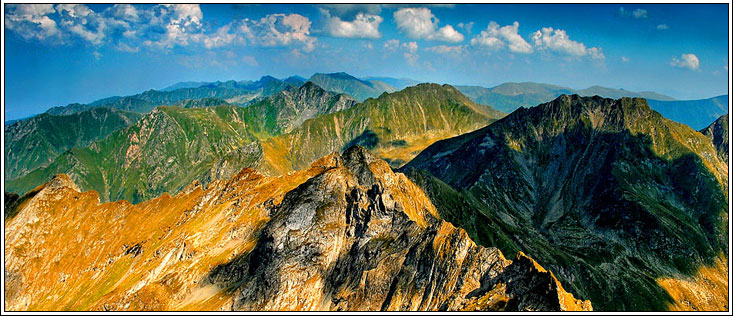Fagaras Mountains
Between November 17, 2022 - June 15, 2023, Transfagarasan road is closed.
Welcome to the website of the Fagaras Mountains, where you can find updated information about Balea Cablecar, view live images from Balea Lac, you can inform of the hiking trails in the area, view maps and get acquainted with chalets and rates their updated. Here you will find information on ski slopes, transfagarasan, access roads, Balea transportation and you can read many interesting articles and tips when you meet the bear.
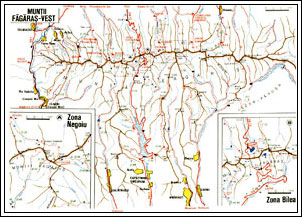
Location
Fagaras Mountains are in the Meridional Carpathians, toward E-V, with a length of 70 km, width 40 km, stretching over an area of 2000 square kilometers, representing the most powerful massive alpine of Romania mountains.
To the west bordering the Olt Valley, east of the Piatra Craiului Mountains, southeast of Iezer-Papusa, north-east of the Taga Massive and southern Persians, Country Olt plain to the north and south bordering to Culoarul Lovistei.
Relief
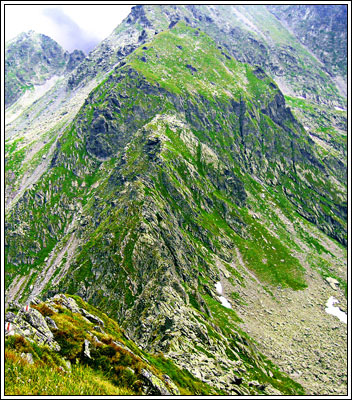
Fagaras Mountains are composed of a lot of crags and aligned peaks , which descends to the extremities below 2000 m, to Olt Valley and Dambovita's depression.
Over 20 peaks with heights exceeding 2000 m lies between Suru and Ludisor, some of which exceed 2500 m: Moldoveanu - the highest, Negoiu, Hunt Buteanu, Lespezi, Dara.
North edges are short, strongly sloping and are loosing into Tara Olt plain and southern edges go down into the groove of Loviste depression.
Glacial relief (impressive, tall, with ice, snow and frost) and torrential river-relief (dull, moderate, mild) are found in the vertical plane. Fagaras Mountains glacial relief due to higher heights, has a wide variety of well-preserved glacial forms. The valleys of Suru and Berivoiu are broad and deep U-shaped glaciers, the one sides and the other of the main ridge. Sharp ridges and steep rocky Fagaras are the result glacier activity. In sharp contrast to the glacial relief, the river and torrential appears, where the valley narrows suddenly are all less rocky slopes and sharp ridges disappear, relief continuing with large pastures and woods.
On the transversal plan, from mountains to the plain Olt Country slope descends over 2000m in less than 10km, horizontally. For example Big Corner of Vistea and is 2527m in altitude and Vistisoara is down to 600m.
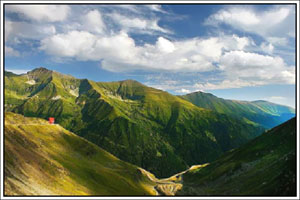
To the south you remain amazed by the immensity of highlands: only mountains as you can see.
In terms of longitudinal Fagaras Mountains looks like a huge stone wall that descends to the extremities, below 2000 m altitude. Here we meet peaks with elevations above 2400 - 2500 m such as Peak. Moldoveanu with 2544 m, Peak Negoiu with 2535 m, Peak Big Vistea with 2527 m, Peak Lespezi with 2522 m or Peak Hunt Buteanu with 2507 m.
The central sector of Fagaras is divided into the eastern glacial (between Fereastra Mare of Sambata and Mount Buzduganu) and the western glacier (between Saua Scarii and Tarna of Apei Cumpanite). Here just Dara reach 2500 m and over 2400 m the peaks: Ciortea and Boiu (to the west), Urlea, Iezerul, Fundul Bandei and Musetescu (to the east).
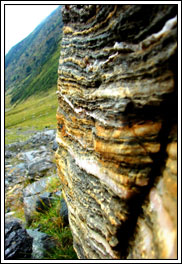
Geology
Fagaras Mountains are composed of metamorphic hard rocks, foundation, belonging crystalline schists, whose sistuozitate is very impotant in mountaineering.
Transylvanian slope consists of epizon shale, the weakly metamorphosed rocks (formed at 4000-7000 m depth), the main ridge of crystalline schists of mezozona (formed in 7000 to 14,000 m deep) on the back and steep outcrops of shale with small white, black mica gneiss.
Argesana slope is composed of crystalline rocks of catazona (formed over 14000 m deep) south conglomerates occur.
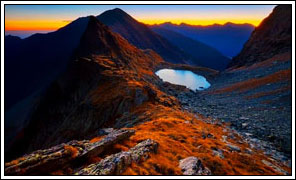
Alpine Lakes
Are found in the hollows and glacial valleys, offering tourists places with wonderful landscapes to halt. The water in these alpine lakes is safe to drink, because is clean, from snow and rain, with a stunning transparent.
In Fagaras Mountains are found between 30-70 glacial lakes, depending on the season we are.
On the northern side we find: Urlea Lake, Lake of Mogos, Vistisoara Lake, Podragu Mare Lake, Podragu Mic Lake, Podragel Lake, Balea Lake, Taul Buteanului Tarn, Doamnei Lake, Avrigului Lake.
On the southern side we find: Ciortei Lake, Caltun Lake, Paltinului Lakes, Capra Lake, Caprita Lake, Lakes from Museteica, Raiosu Lake, Buda Lake, Podul Giurgiului Tarn, Lake from Valea Rea, Galbena Scarisoara Lake, Galbena IV Lake, Manastirii Lake, Bindea Lake, Gemenu de Sus Lake, Gemenu de Jos Lake, Rosu Lake, Zirna Lake, Jgheburoasa Lake.
On the ridge of Fagaras find: Cerbului Lake, Bratila Lake.
